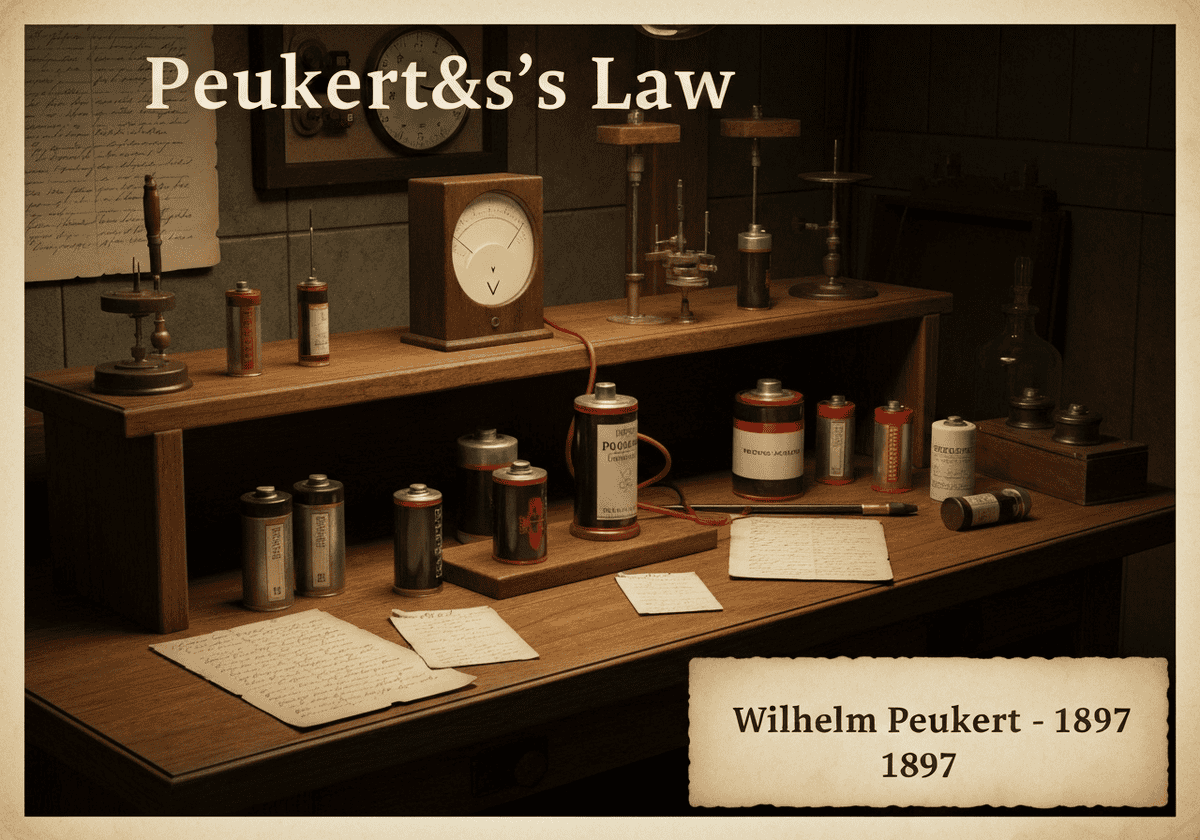一个经验公式,用于描述电池的可用容量如何随着放电率的增加而减少。该定律表示为 [latex]C_p = I^k t[/latex],其中 [latex]C_p[/latex] 是一安培放电速率下的容量,[latex]I[/latex] 是放电电流,[latex]t[/latex] 是放电时间,[latex]k[/latex] 是针对电池类型的普克特常数。它量化了高负载时的低效率。


(generate image for illustration only)
一个经验公式,用于描述电池的可用容量如何随着放电率的增加而减少。该定律表示为 [latex]C_p = I^k t[/latex],其中 [latex]C_p[/latex] 是一安培放电速率下的容量,[latex]I[/latex] 是放电电流,[latex]t[/latex] 是放电时间,[latex]k[/latex] 是针对电池类型的普克特常数。它量化了高负载时的低效率。
Peukert’s law provides a more accurate picture of battery capacity than the simple amp-hour rating, which is typically specified at a low, constant discharge rate. The law accounts for the fact that at high discharge rates, the battery becomes less efficient. This inefficiency stems from several factors. Firstly, the internal resistance of the battery causes energy to be lost as heat, a loss that increases with the square of the current ([latex]P_{loss} = I^2R[/latex]). This wasted energy is unavailable to the load.
Secondly, the electrochemical processes within the battery have finite speeds. At high discharge rates, the chemical reactions cannot keep pace, and the diffusion of ions within the electrolyte becomes a bottleneck. This leads to a depletion of reactants near the electrodes’ surfaces, causing the voltage to drop prematurely and cutting off the discharge before all the active material has been utilized. The unused material means the effective capacity delivered is lower.
The Peukert constant, [latex]k[/latex], is determined empirically and reflects how much a battery is affected by high discharge rates. A value of [latex]k[/latex] close to 1 indicates an ideal battery that is not significantly affected by the discharge rate. Lead-acid batteries have a relatively high [latex]k[/latex] (typically 1.1 to 1.3), while modern lithium-ion batteries have a [latex]k[/latex] much closer to 1 (e.g., 1.05), indicating their superior performance under heavy loads.
迎接新挑战
机械工程师、项目、工艺工程师或研发经理
可在短时间内接受新的挑战。
通过 LinkedIn 联系我
塑料金属电子集成、成本设计、GMP、人体工程学、中高容量设备和耗材、精益制造、受监管行业、CE 和 FDA、CAD、Solidworks、精益西格玛黑带、医疗 ISO 13485
普克特定律
(如果日期不详或不相关,例如 "流体力学",则对其显著出现的时间作了四舍五入的估计)。
相关发明、创新和技术原理
{{标题}}
{%,如果摘录 %}{{ 摘录 | truncatewords:55 }}
{% endif %}